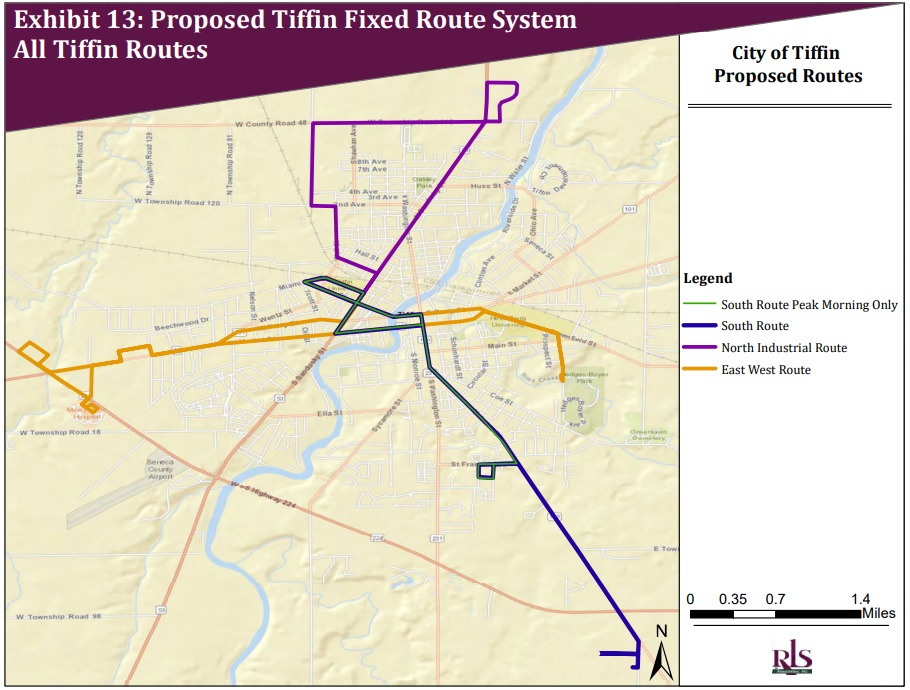Post-meeting release 10/24
Commissioners receive update on bus transit plan Thursday morning

[Tiffin, OH Oct. 24, 2019] – The Seneca County Board of Commissioners received an update on a bus transit plan Thursday morning.
RLS & Associates Senior Associate Ray Boylston, who has more than 30 years of experience in the transit industry, delivered the PowerPoint presentation.
The Dayton-area company has been working on the bus transit plan for the county and the city of Tiffin for about a year.
The plan proposes a detailed bus transportation strategy that addresses the timing of routes, how many buses would be needed, the cost of operation and how to establish routes.
In December, the commissioners allocated about $5,000 to help fund the plan, while several other sources also pitched in. The funding is to be mostly reimbursed by state grants. The overall cost of the plan is about $30,000, with about 90 percent of it to be reimbursed to local participants.
This is the second phase of planning for the document and it follows a 2015 Heidelberg University study that examined the feasibility of a bus transit route in the county.
The plan proposes three bus routes, including one that runs East and West through Tiffin, one that is from inside the city of Tiffin to outside of city limits to the south and one route that focuses on industrial parks.
The east-west route would travel in one-hour frequencies along the Market Street corridor. The route would serve Tiffin University, Heidelberg University, downtown Tiffin, Mercy Health-Tiffin Hospital and the highest concentration of commercial development within the city limits.
The south route would provide citizens with access to various social service agencies located in the south Melmore Street corridor, in addition to serving residents living in the southeast portion of the city.
The industrial park route would operate from the Tiffin University Heminger Center transfer hub, to the Northstar and Eagle Rock industrial parks. The main goal of this route would be to provide transportation for employees of the many businesses along the route corridor. Boylston said this route could eventually be expanded to reach other industrial businesses around the county.
The proposal would supplement the current Seneca Crawford Area Transportation fleet, freeing up vehicles to transport those who live in more rural areas. The service for those people would likely become quicker and more efficient.
The system would be administered by SCAT. The annual operating budget for the system would be about $482,000. The initial capital budget, which would include the purchase of four buses with bike racks on the front, would be about $383,507. SCAT and other area partners already have applied for 100-percent grant funding for the operating and capital budgets. If these grants are not received, other grants of various levels (50-percent and 80-percent funded by state or federal entities) could be obtained.
The operation is not county-funded, and no request has been made of the county for capital or operations. It is possible the board could later agree to contribute some funding to the cause.
The commissioners plan to further review the plan before deciding to accept the findings of the plan and the company is to give its presentation to city officials soon.
To view the most recent draft of the plan, visit this link.
In other business, the board approved all resolutions from this week’s agenda.
